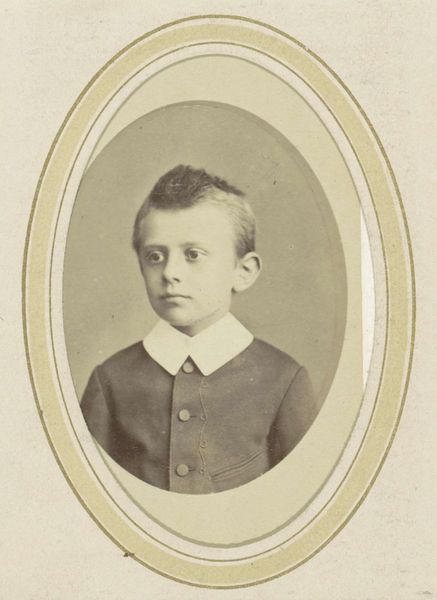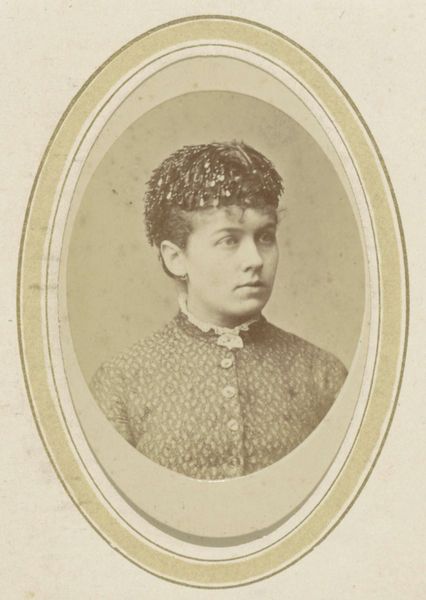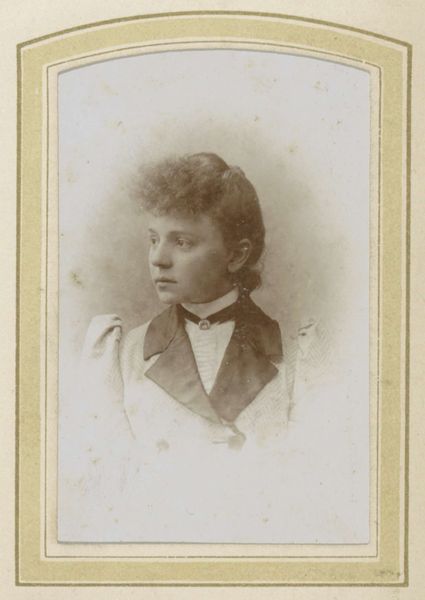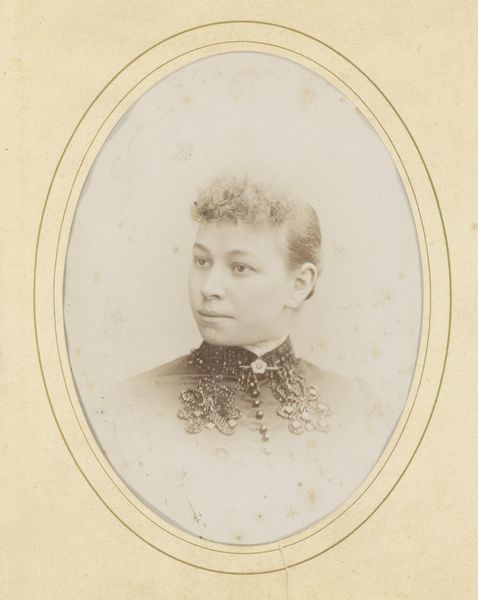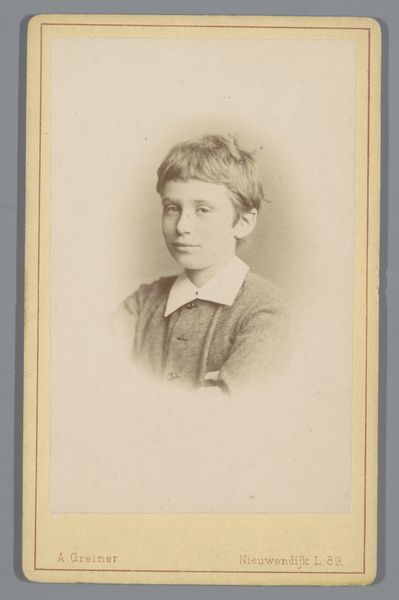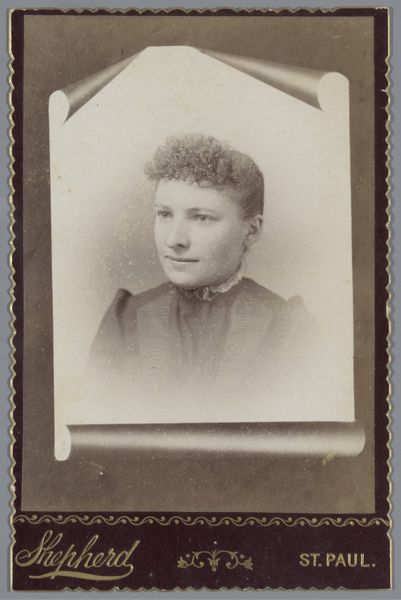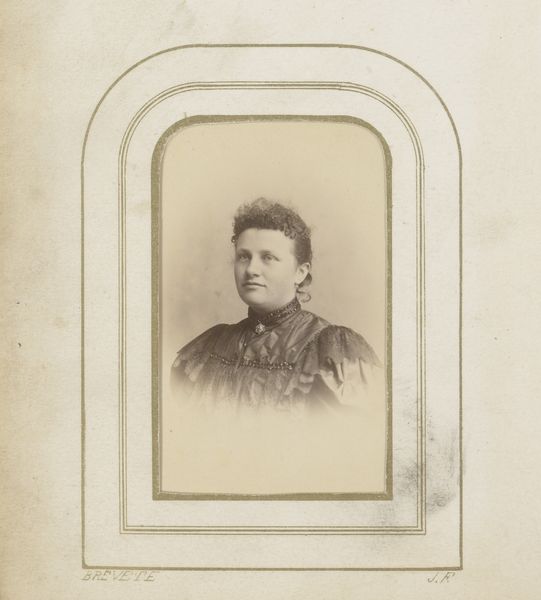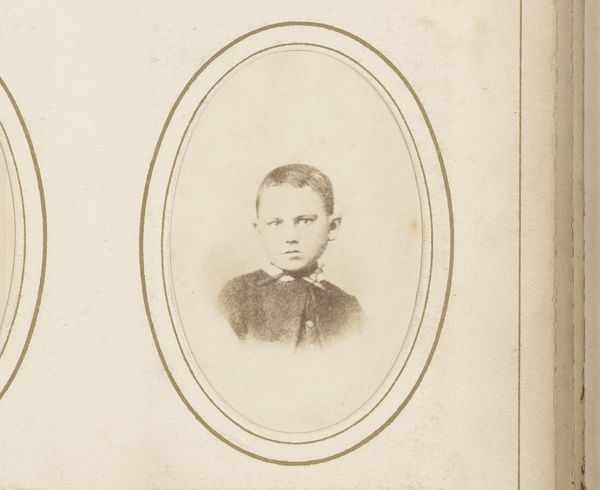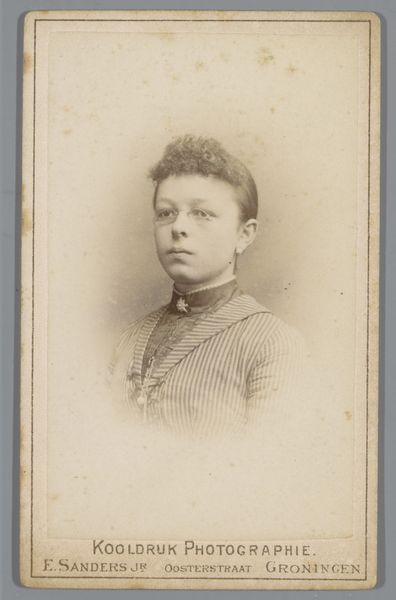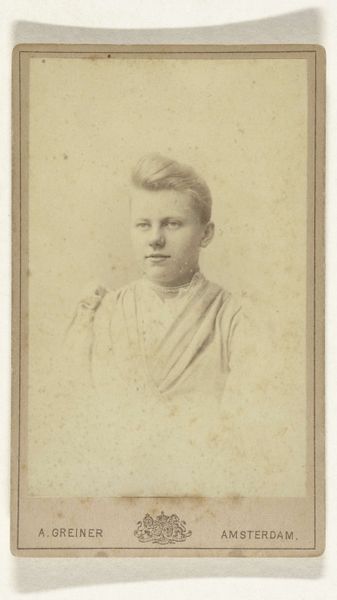
photography, gelatin-silver-print
#
portrait
#
charcoal drawing
#
photography
#
historical photography
#
portrait reference
#
gelatin-silver-print
#
19th century
Dimensions: height 90 mm, width 54 mm, height 103 mm, width 65 mm
Copyright: Rijks Museum: Open Domain
Curator: This is an intriguing gelatin-silver print, "Portret van een jongen met een witte kraag" which translates to "Portrait of a boy with a white collar." The image, created sometime between 1866 and 1900 by Johan Christiaan Reesinck, presents a young boy in formal attire. What strikes you first about it? Editor: The overall effect is somewhat melancholic, don't you think? The soft focus and the subdued tones create this delicate, almost fragile feel. He seems trapped by this pristine white collar and dark jacket. Curator: Absolutely, and it speaks volumes about the constructed nature of childhood, particularly for boys, during this era. The immaculate collar against the boy's otherwise ordinary features hints at the pressures of social expectations and gendered norms, demanding respectability and conformity from a young age. Editor: Yes, the white collar has enormous symbolic significance. It's a classic emblem of purity and innocence but, equally, a marker of bourgeois status. It presents such a contrast with his perhaps dishevelled hair—and this is likely on purpose, signifying both innocence and privilege. Curator: Precisely. Think about the semiotics of clothing and appearance, the conscious display of class through dress, and the role these portraits played in solidifying societal hierarchies. This young boy is far from a blank slate, he's performing a role within a larger social framework. Editor: And look at his eyes, avoiding our gaze, which adds to this overall sense of repression. The oval frame reinforces a feeling of constraint, almost like a precious jewel being presented to the viewer for our inspection. Curator: Exactly. These portrait photographs were often commissioned by families to assert their status and project a desired image into the public sphere. It serves as a coded form of communication within that societal milieu. The photographic object, itself, functions as both a personal memento and a public declaration. Editor: Well, viewing it from this angle allows us to consider the cultural importance that an individual's social context played upon the reading of these seemingly simple images, which is precisely the strength of visual emblems. Curator: I completely agree. I find myself continually drawn into how these old photographs both represent and uphold certain dominant narratives within 19th-century Dutch culture. Editor: Understanding the emotional and historical power of symbols enriches how we connect to the past, in the image, the symbol creates an icon.
Comments
No comments
Be the first to comment and join the conversation on the ultimate creative platform.

